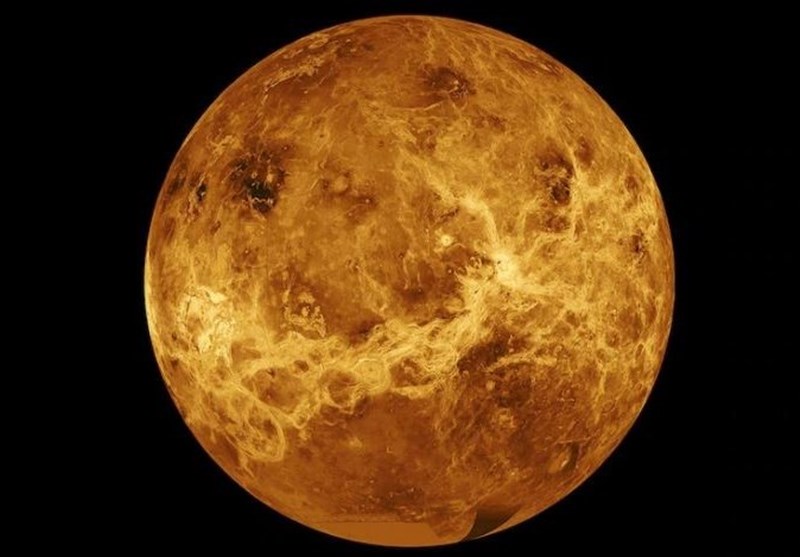Astronomers Directly Detect Atomic Oxygen on Venus
TEHRAN (Tasnim) – Venus is known to rotate very slowly, with one day on Venus lasting the equivalent of 243 Earth days.
Atomic oxygen, a key species in the mesosphere and thermosphere of Venus, is produced on the dayside of the planet by the breakdown of carbon dioxide and carbon monoxide, and then transported to the nightside.
Atomic oxygen is important for the photochemistry and energy balance of Venus’s atmosphere, but it has not yet been directly observed on the dayside of Venus.
Nightside detections have previously been limited to observations of the night airglow of Venus, a faint emission of light by the planetary atmosphere.
In a new study, Dr. Heinz-Wilhelm Hübers, a researcher at the Deutsches Zentrum für Luft- und Raumfahrt and the Humboldt-Universität zu Berlin, and his colleagues analyzed a total of 17 points on both Venus’ dayside and nightside using the German Receiver for Astronomy at Terahertz Frequencies (upGREAT) array spectrometer on board NASA’s Stratospheric Observatory for Infrared Astronomy (SOFIA) airplane.
“The observations were made in the early evenings of November 10, 11 and 13, 2021,” they said.
“In total, 17 positions on Venus have been measured: seven on the dayside, nine on the nightside and one at the terminator.”
The researchers detected atomic oxygen at all observed points and found it to be concentrated at altitudes of around 100 km.
The measurements were based on an atomic oxygen ground state fine structure at 4.74 Terahertz.
They also found variations in the column densities, with a maximum density recorded on the dayside.
“The observed average Venus continuum brightness temperature is approximately 246 K corresponding to an altitude of about 65-70 km right above the cloud layer,” they said.
“The temperature of the atomic oxygen is approximately 156 K on the dayside and approximately 115 K on the nightside, which corresponds to altitudes around 100 km.”
“Future observations, especially near the antisolar and subsolar points but also at all solar zenith angles, will provide a more detailed picture of this peculiar region and support future space missions to Venus such as NASA’s DAVINCI mission or ESA’s EnVision mission,” they added.
“Along with measurements of atomic oxygen in the atmospheres of Earth and Mars these data may help to improve our understanding of how and why Venus and Earth atmospheres are so different.”






